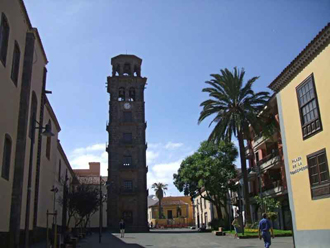
San Cristóbal de La Laguna has an exceptional, universal value due to the concept of its town plan. This historical site is the archetype of city-territory. It is the first example of a non-fortified town, conceived and built according to a plan inspired by navigation, the science of the time. Its layout is based on peaceful new social order, inspired by the religious doctrine of the millennium of the year 1500.
The town map can actually be read as a "stellar map" in which the dots indicate particular points in the city and the links between these points and the town as a whole. It has a symbolic meaning and should be interpreted as a marine map or a map of the constellations of the time. The characteristics of the city of La Laguna, the archipelago's first capital city, set the tone for the new cities in America. The city is home to approximately six hundred well-preserved original Mudejar buildings and is a living example of the exchange between European and American culture, a culture the city has maintained strong ties with over the centuries.
All of this led the World Heritage Committee of the United Nations Educational, Scientific and Cultural Organisation (UNESCO), to announce, on the 2nd of December 1999, in Marrakech (Morocco), its approval of San Cristóbal de La Laguna in Tenerife as a World Heritage City.
For further information, please visit:
- Town Hall of San Cristóbal de La Laguna
- Web: www.aytolalaguna.com